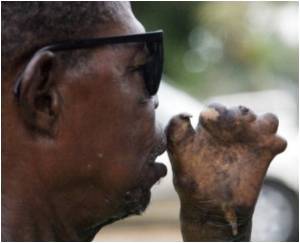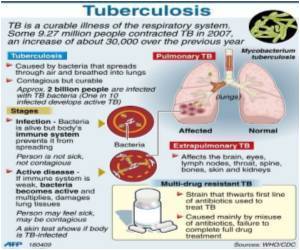
"There are about 209 out of 640 districts where the number of new cases exceeds the WHO target of less than 10 new cases per 100,000," she said.
"India is the biggest contributor to the global burden with 120,000 new cases per year," she added.
Leprosy, an ancient disease which causes lesions on the skin and attacks nerves in the hands and feet, resulting in disability, was declared officially eliminated in India in 2005 according to WHO guidelines on prevalence rates.
The WHO allows governments to declare that leprosy is no longer a public health risk if the prevalence rate falls below one case per 10,000 people.
Ten percent of the new cases occurring in India involve children, the WHO's Menabde said.
Advertisement
"It suggests that progress against leprosy can also reverse and it can grow and India can also lose its position as having eliminated the disease," she said.
Advertisement
"They changed tracks too soon, took their focus off and now we are seeing a rise in cases in certain pockets," he said, citing the case of Maharashtra, India's richest state and home to the national financial hub of Mumbai.
"Just a couple of months back, the central leprosy division found that the number of new cases in Maharashtra has gone up from 9-10 per 100,000 in 2006-07 to 13 per 100,000 now. It's very worrying," he told AFP.
He said a decline in funding from state and private donors hurt efforts to fight the disease.
"Agencies which used to support us don't think it's important anymore. It's a huge problem. We don't turn away patients but we are forced to delay treatment because of funding constraints," he said.
Pai said that leprosy's most common victims come from a low socio-economic background and fear that they will be stigmatised by their community if news of their illness becomes public.
"Many people who come to us with new infections live in congested localities like Dharavi, a huge slum in Mumbai. Sanitation, overcrowding, poverty, all contribute to the environment that allows leprosy to flourish," he said.
"Then there's the stigma surrounding the disease, which is one of the reasons people hesitate to come forward and report if they have symptoms."
Yohei Sasakawa, the WHO goodwill ambassador for leprosy elimination since 2001, said India needed to do more to address the discrimination suffered by leprosy patients.
"What we must do now is raise awareness that it is a medical and a social challenge. There are many invisible customs we must fight against," he told AFP.
"The numerical target achieved in 2005 was a great success for India, but it is just a mid-term goal. We have not won the battle yet," he said.
Source-AFP








